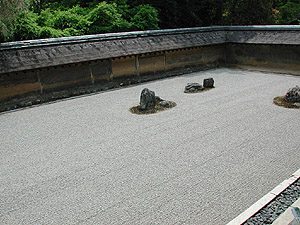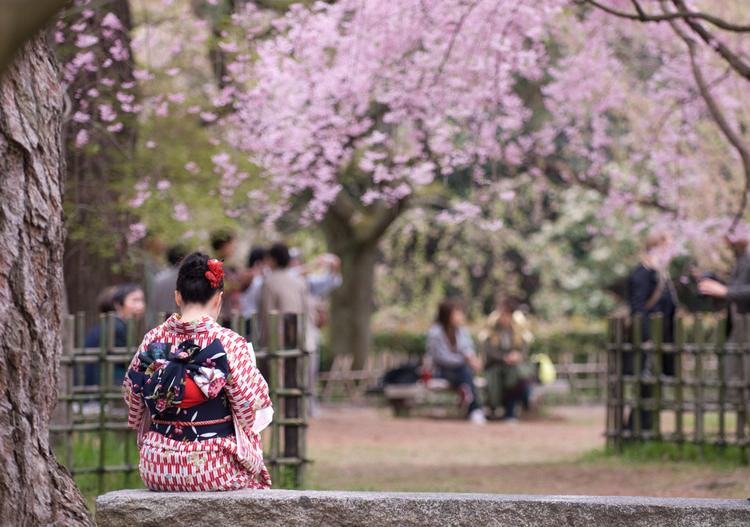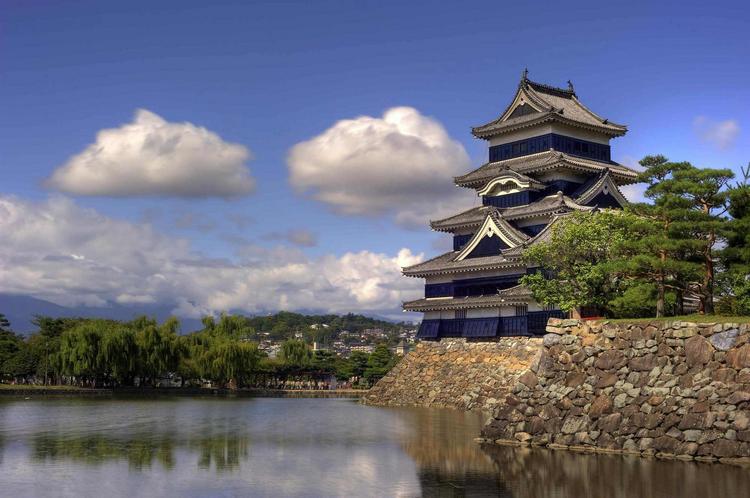JAPANESE GARDENS WITH THE EYES OF A JOURNALIST
 The famous rock garden of the Ryoanji Monastery in Kyoto. Japanese gardens do not bear material fruit. Their purpose in another is to awaken the work of thought.
The famous rock garden of the Ryoanji Monastery in Kyoto. Japanese gardens do not bear material fruit. Their purpose in another is to awaken the work of thought.
Divine emptiness
It is known that in Zen monasteries there are rooms for contemplation. They are empty. According to legend, the founder of the Darum sect, in order to renounce both the world and himself, for many years sat in such a room facing the wall. Contemplation of empty space is one of the methods of understanding the Absolute. Such are the classic Japanese gardens – stones, mosses, water, young pine … They resemble the same rooms and are not created for admiring. The concept of immortal emptiness is hardly comprehended by the European consciousness, and attempts to create real Japanese gardens are rarely successful.
Opinion
They say that only 8% of Japanese have passports, and, therefore, travel around the world, apparently, the same. The rest of the Japanese who remain on their native islands seem to be completely uninterested in what is happening there in another world, especially in this bustling Europe. They are terribly conservative. The Japanese traveling are indulgent with the “Eastern boom”, it entertains them. And the design specialists, that is, cultural carriers, not only do not protest against planting, for example, bamboo groves in the Moscow Region and Greenland, but even help the desperate Europeans in every possible way in this difficult task.
But the interpenetration of cultures is necessary. It seems that with the art of ikebana we are already doing well. But with Japanese gardens is bad. It’s very difficult here. For no money it’s impossible to create a garden on the principle of “I, Van, I want the same.” For this, you probably need to be not only a Buddhist, but also a Japanese. And live the whole history of the country together with its people. Otherwise, it turns out either lubok in the Japanese way, or an alpine hill. In this case, on the right – a barbecue, on the left – a tennis court. The Japanese garden is not created to be “beautiful”, but to be “right.” And if it’s right, then it’s beautiful, but only for someone who understands why he did it.
Why does the Japanese garden
The deification of the world and all that exists in it, down to individual stones, happened back in ancient, pre-Buddhist Japan. The traditional Japanese religion is Shintoism (syn – gods, then – the way). The appeal of Shintoism is that the deities are not distant from the world, they are all here (in stone, sand, wood), nearby, which makes communication with them easier, but it does not become less effective.
The second religion in Japan is the one that arose in the 5th century BC. in India, but Buddhism not lingering there. The meaning of the life of an Orthodox Buddhist in the quest for nirvana. And there are many ways to throw yourself out of a sad life vale. For a Zen preacher, sit in the rock garden, think and wait for enlightenment (satori is the highest moment of revelation).
It is not without reason that the symbolic kare sansui garden (dry landscape), where mountains and lakes are marked by a strict composition of stones and sand, which was strict to asceticism, appeared in the 12th-13th centuries. together with a Zen flat garden, also small in size and sometimes surrounded by a wall. They were created in Buddhist monasteries, and not for beauty, but by necessity. This is the time of feuds in Japan, when a person’s life was worth nothing, and salvation could be found only in a special philosophy.
The garden for the Japanese is a sacred territory free of everything, where a deity lives, requiring not splendor and worship, but only the work of the soul and thought. After all, stones are only a tool. After a long and silent contemplation of stones, consciousness must be earned. And then there are pictures, each with its own. What we see depends only on us. Someone just sees stones, well, let them. The supertask exists: to expand consciousness, unsettle it and direct it to where new truths are revealed.
Many rock gardens continue to remain in monasteries. Authors and owners of their monks. Vanity is unacceptable here, as it is unthinkable, for example, in the garden “Ocean of the Void”, where a hedge frames a rectangular space with two slides of pebbles in the middle. And that’s all. Then it was called minimalism.
How to
Probably the most correct – as in the garden in front of the entrance to the old imperial palace in Kyoto. Ceremonial courtyard – a platform 25×25 m, covered with gravel, which do not go. Two trees are planted on both sides of the entrance – the right mandarin and the left sakura, yin and yang. The veranda of the palace has a length of about 20 m with a distance between columns of about 3 m. The construction is not accidental – it is believed that these are precisely the dimensions that create the illusion of infinity.
The rock garden is also contemplated from the veranda. It is from this point that all the richness of the simplest textures is visible: rough stones, barely noticeable color shades of moss, smooth whitish pebbles.
However, the void gradually filled. By the Japanese themselves and for many centuries. And if Europeans come to fill the sacred void, they are obliged to do this exclusively according to existing canons. Which, alas, almost never happens. And theorists and practitioners admit this, both in Russia and in advanced Europe.
Garden to be!




